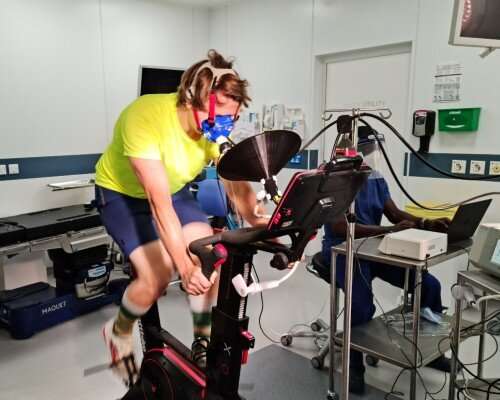
Vigorous exercise does not produce significantly more respiratory particles than speaking, but high-intensity exercise does, finds new University of Bristol-led research. The study, published in Communications Medicine, is the first to measure exhaled aerosols generated during exercise, to help inform the risk of airborne viral transmission of SARS-CoV-2 for indoor exercise facilities and sporting and physical group activities.
Transmission of SARS-CoV-2 is considered to occur predominantly by inhalation of infectious aerosol. In the first published study of its kind, a UK-wide collaborative team of clinicians and researchers conducted a series of experiments to measure the size and concentration of exhaled particles (up to 20 µm diameter) which are generated in our respiratory tracts and breathed out, during vigorous and high-intensity exercise.
Using a cardiopulmonary exercise test (CPET), 25 healthy participants comprising 13 males and 12 females with a range of athletic abilities, were recruited to undertake four different activities (breathing at rest, speaking at normal conversational volume, vigorous exercise and high-intensity exercise) on a cycle ergometer. The participants breathed into a specially adapted mask which measured airflow and transmitted any particles emitted from their mouth and nose to a particle counter. Experiments were carried out in an orthopedic operating theater—an environment of “zero aerosol background,” which allowed the researchers to unambiguously identify the aerosols generated by the participants.
The team found that the size of airborne particles emitted during vigorous exercise was consistent with that of a person breathing at rest. However, the rate at which individuals exhale aerosol mass during vigorous exercise was found to be similar to speaking at a conversational volume.
Source: Read Full Article
